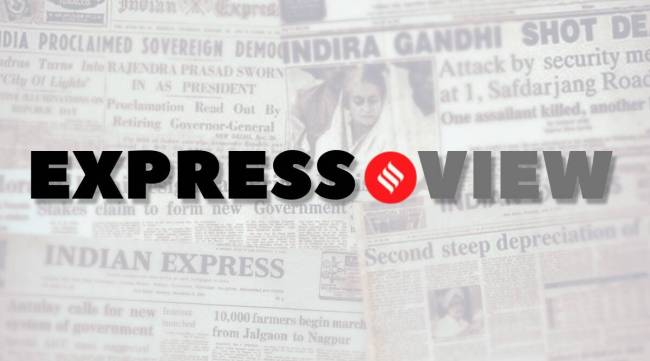Opinion Why the Election Commission was right to freeze the ‘bow and arrow’ in the match between the two factions of the Shiv Sena
In an intensely competitive polity, especially when parties are vulnerable to defections and splits, how the EC interprets the law and convention on such matters will have a bearing not only in the immediate Sena case but also on public trust in institutions – and the democratic process itself
 The EC decision is in the spotlight also because the freezing of the symbol will have a bearing on the November 3 Andheri (East) by-election to the Maharashtra assembly.
The EC decision is in the spotlight also because the freezing of the symbol will have a bearing on the November 3 Andheri (East) by-election to the Maharashtra assembly. The Election Commission of India is right to freeze the “bow and arrow” symbol of the Shiv Sena, which has been claimed by rival groups after a split in the party, until it decides which faction constitutes the “real Shiv Sena”. Convention and precedent support this decision. Recently, the Supreme Court, on a petition filed by the Uddhav Thackeray faction, too had ruled that the EC is the proper authority to adjudicate on such matters. The apex court will, however, continue to hear the case of disqualification of legislators aligned with the Eknath Shinde Sena faction.
The EC decision is in the spotlight also because the freezing of the symbol will have a bearing on the November 3 Andheri (East) by-election to the Maharashtra assembly. It is a prestige battle for the Thackeray faction, which has fielded the wife of the deceased Sena MLA as its candidate, while the Shinde faction is backing the BJP nominee. The Thackeray faction candidate will now have to contest on a new symbol (and a new name though it can have a linkage to the parent party), which makes her task tougher. It is this immediate political context that has made the Thackeray faction question the EC decision. The criticism is unwarranted. The Thackeray faction is right to say that in the bypoll the rival faction is acting as a proxy for the BJP but that’s a political point more than anything else. Section 15 of the Election Symbols (Reservation and Allotment) Order, 1968, authorises the EC to decide which faction constitutes the recognised party in the event of rival groups making a claim for the mother organisation, its name, flag and symbol. The EC decision is binding on all the parties. In several judgments, the SC has upheld the EC’s authority on the matter and the test of majority principle it follows to arrive at a decision. The verification of the claims made by rival factions tends to be a long drawn-out process and may take even months. For instance, the Sena factions have made competing claims about the number of legislators, members in the party’s national executive, state chiefs, primary members (which run into lakhs), post holders in the organisation etc supporting them. So, if a by-election has to be scheduled before the resolution of the dispute, the EC, in order to ensure a level-playing field, may have no option but to freeze the symbol. In 2017, the EC had frozen the two-leaves symbol of AIADMK when rival factions sought it ahead of a by-poll in Tamil Nadu. This precedent was followed last October when a dispute arose over the custodianship of LJP in Bihar.
However, considering the stakes in the battle, the EC’s actions are likely to come under close scrutiny. Its hard-won reputation of being a fair and independent institution becomes extremely relevant. In an intensely competitive polity, especially when parties are vulnerable to defections and splits, how the EC interprets the law and convention on such matters will have a bearing not only in the immediate Sena case but also on public trust in institutions — and the democratic process itself.





